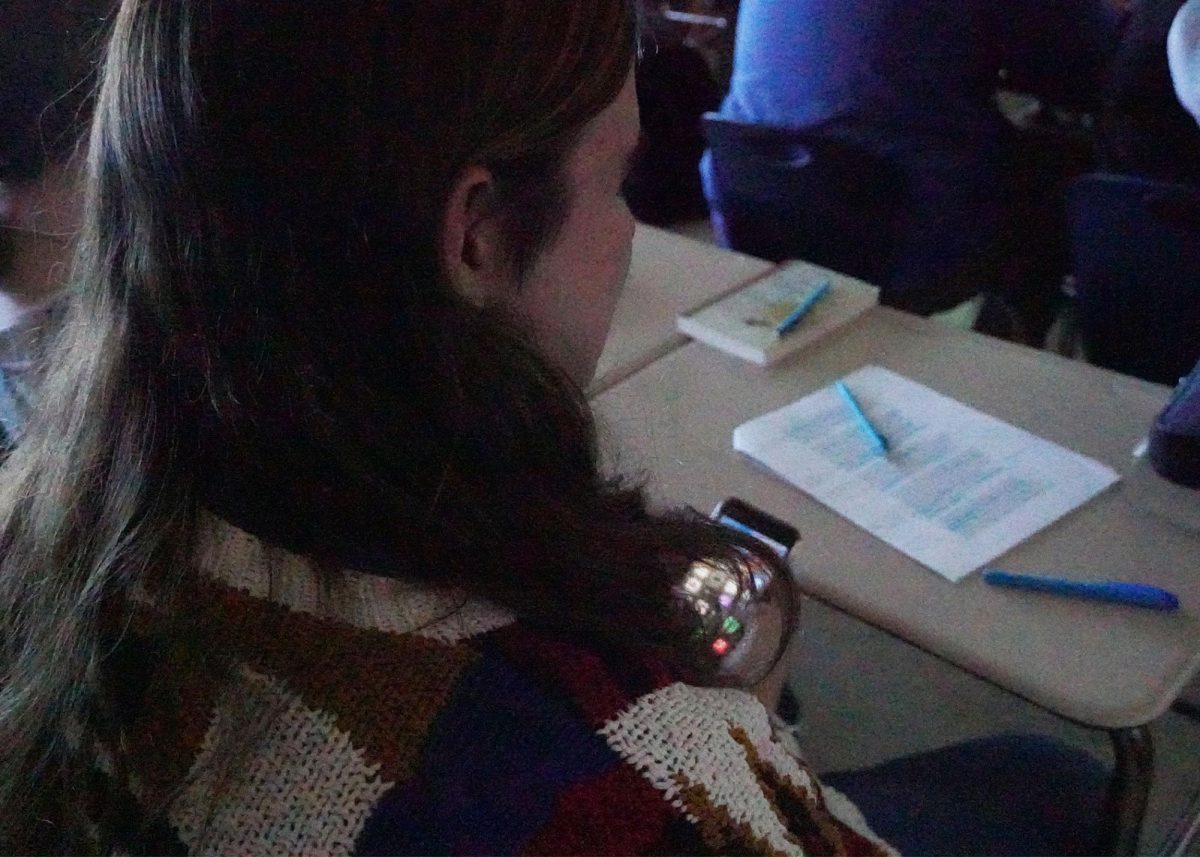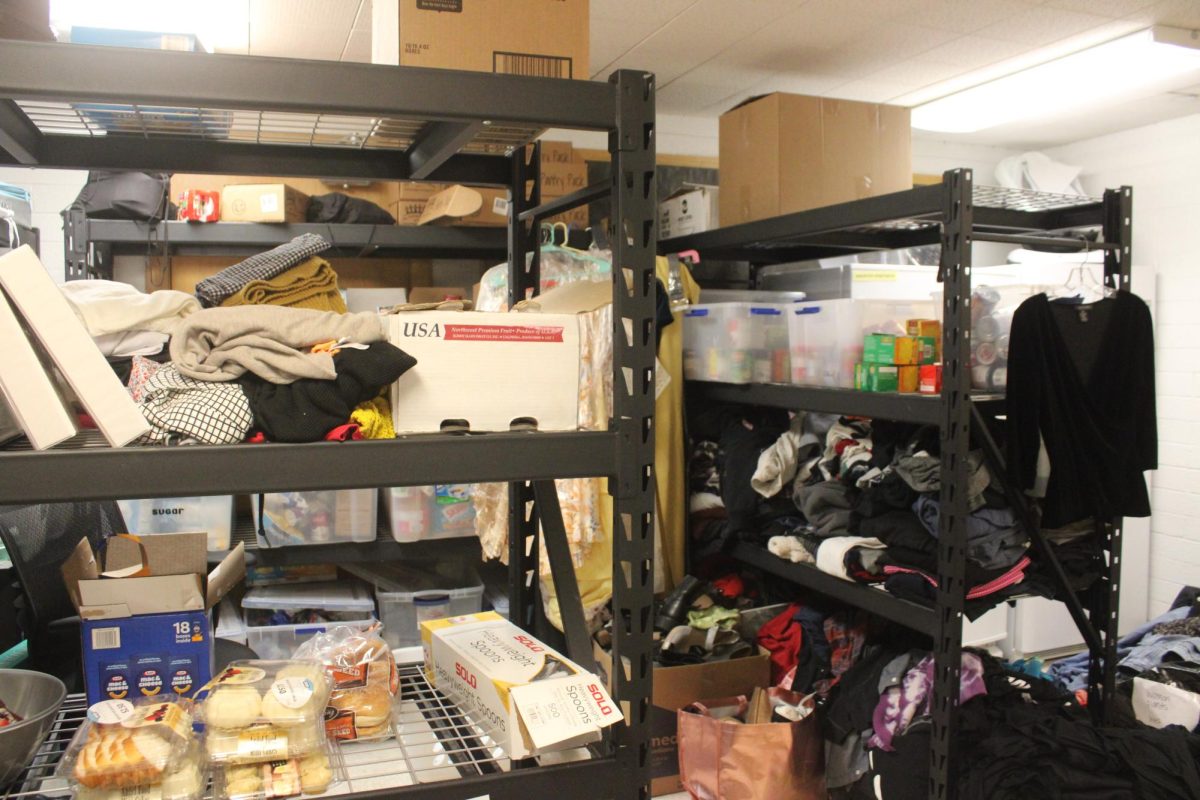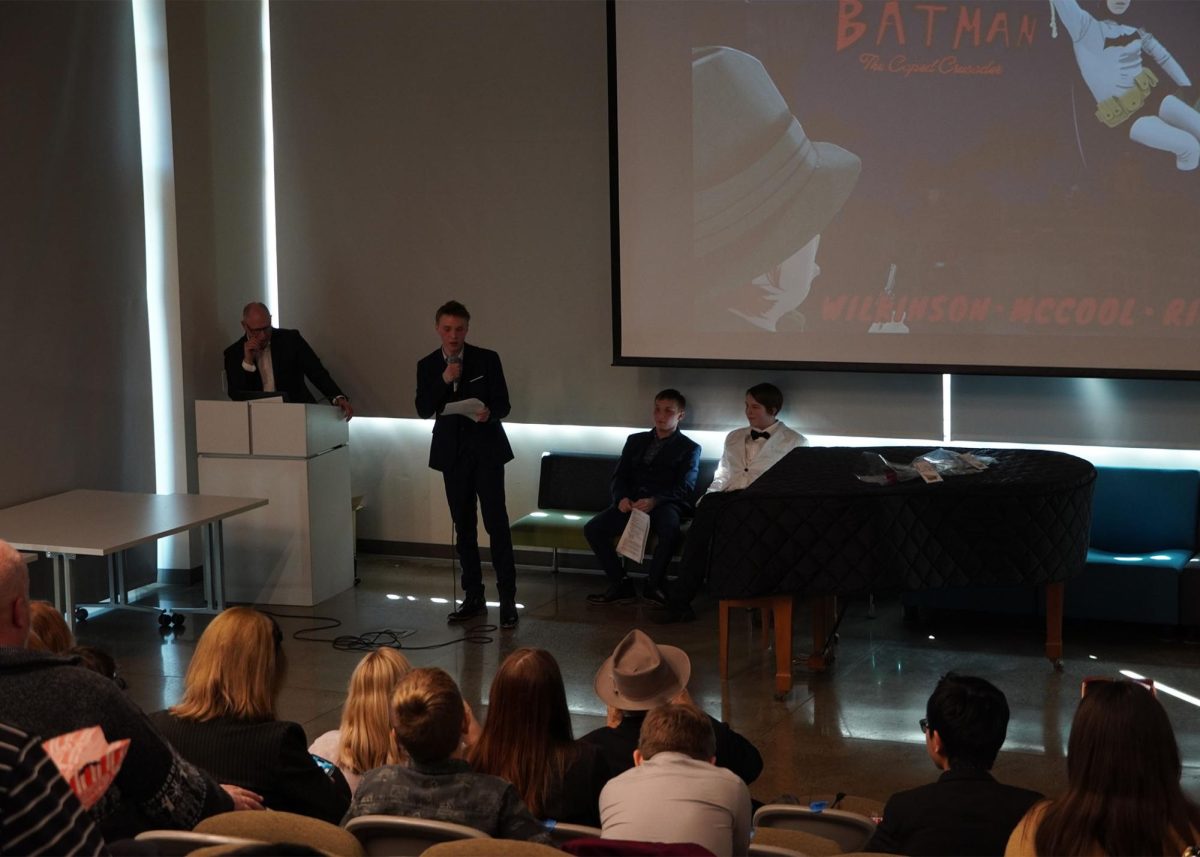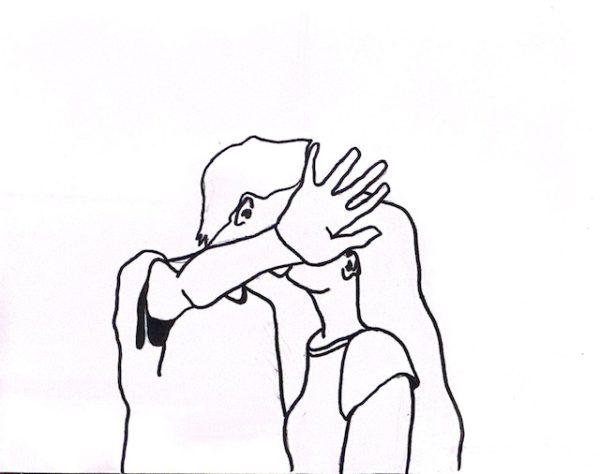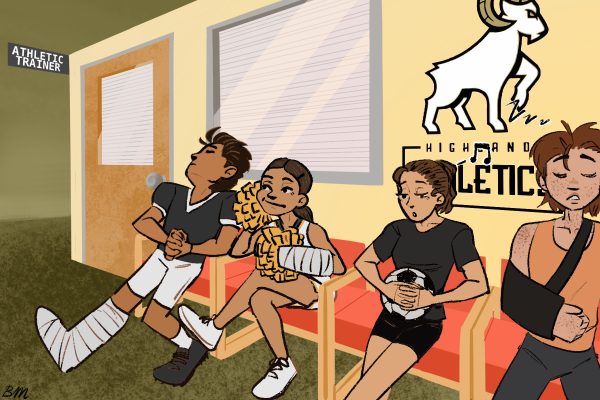For Give Or For Get:
Why Do We Need Motivation To Give?
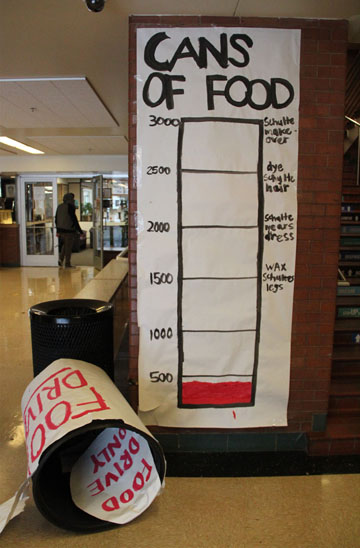
Students were encouraged to donate to the food drive through this poster.
February 4, 2015
When it comes right down to it, money is one of, if not the biggest reason people do stupid things. There’s no denying that. How many times has the question “What’s in it for me?” been thought when we are requested of something? People’s motivation to give should come from just the thought of a family going hungry, of children’s bones poking through their skin prominently, not because some teenager is pouring water over their head and screaming at a camera.
The word “donate” was supposed to mean to give for a good cause. Lately, some motivation is needed when one starts to consider giving to a the cause. Publicity stunts are on the rise from charities, with July and August of 2014 seeing the Ice Bucket Challenge dominate YouTube and many other social media sites. Before the challenge rose to popularity, the ALS Association made only $2.5 million in 2013. In this year alone, they have made more than $70.2 million, tripling their money donated within the five weeks of that August, and received more than 300 million donors.
While it is nice that people have donated, and the Ice Bucket Challenge was a good way to bring awareness to a good cause, was it completely necessary? Do we, as a society, need to get something in return for doing the right thing?
Probably, actually.
Many argued against the challenge, with accusations ranging from it being a waste of water to it being hazardous to one’s health. Would as many people have donated if big name celebrities like Chris Pratt, Bill Gates, or Robert Downey Jr. hadn’t made their videos? Yes, the association should always make the kind of money they did, yet sometimes, a little push is needed, and the Ice Bucket Challenge did just that. It brought more than 300 million people together, and was a huge success.
While the era of the Ice Buckets are over, other activities are older and more accepted, such as Making Strides Against Breast Cancer, which is a walking event that is held yearly that brings awareness and raises money for breast cancer. It is obviously more accepted than Ice Buckets, but why? Essentially, it is the same thing: a publicity stunt used to raise money for a cause. There is some differences, yes, but why should it matter? The feeling of knowing one is helping another in need be the push they need to do something about it.
Highland’s Food Drive is in a similar situation, but with a few major differences.
Principal Paul Schulte had offered alterations to his body depending on the number of cans donated to the cause, ranging from waxing legs to shaving his head, and the grand prize being a makeover.
“I think it picked up a little bit, with activities like the dances,” Schulte said. “[It helped], tying it to different activities that the kids like to do.”
While it is a good gesture on Schulte’s part, it seems to lack the pizzazz that other charities have accomplished. A big poster was put up in front of the freshman success room, with the “punishments” being offered when a goal was met for the food drive. However, the SBO officers in charge of the food drive did not see as big of a spike in donations as they had hoped.
“I think a lot of kids just kind of saw [the Schulte poster] and kept walking down the hall,” HAM secretary Mac Wilson said.
The drive to give (pun intended) wasn’t high enough to meet the 3,000 can goal that was on the poster, and Highland barely recieved more than 1,500 donations, just over half, and barely enough to get Schulte to wax his legs. If everyone at Highland had given one can of food, there would have been close to 1,800 cans, which would have achieved the ever so “anticipated” goal of Schulte wearing a dress.
Only 1,500 cans. Granted, this is the best we have ever done, according to Schulte, who has been at Highland for 11 years, and it’s good that we can say that we have broken a record.
The thing is, I gave three cans to the cause. I understand that some at Highland are not able to spare the food, and that is fine. If more people had given to the cause, maybe we would have gotten the ever so needed Schulte makeover. It is somewhat of an embarassment that Highland students can tweet twice as much as East High in a contest, yet when it comes to feeding starving families, we ignore the cause and get annoyed at the announcements of a just cause. It truly is something to be ashamed of.
“I don’t think that the insentive to punish Schulte really impacted the food drive at all,” Wilson said.
So, while it is not exactly good that people need to get something to give something, in some cases, it may be a reality that people may have to come to face, and if it works (unlike some stunts), then it might be something that people will have to live with.
